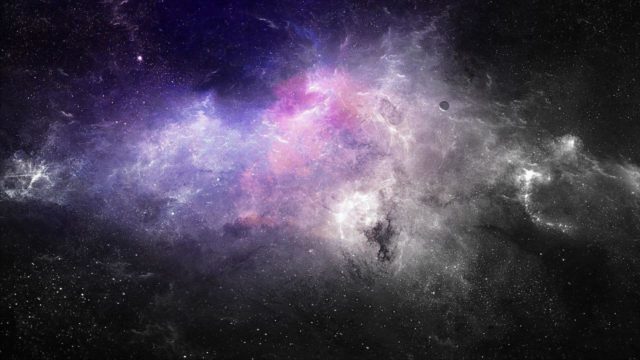iPaulina

Dadaism
What is the meaning behind senseless art?What do you call an art movement that can’t be criticised or analysed, and makes no sense? 'Dada' was a modernist movement, with a name as nonsensical and meaningless as its art. Pioneered by young artists in Europe during the senseless slaughter of WW1, Dadaist art is often ugly collages, absurd performances or random vandalised objects. Dadaism is created through spontaneity and irreverence, creating ridiculous artworks; most famously, an artist named Duchamp exhibited a literal urinal titled Fountain and a copy of the Mona Lisa with a crudely drawn moustache. In one classic Dada performance, people mumbled gibberish whilst wearing cardboard tubes.
The young artists wanted to provoke and destroy the traditional values of the bourgeois world of art, and reject institutions, logic and government. Their mission was to have no mission, and the art was designed with apparent randomness, thus making a mockery of the academics who try to analyse it. It is so self-aware and self-deprecating that you can hardly criticise it. Art critics have written essays analysing the real meaning behind Fountain, thus falling into the great irony of the piece; the paradoxes of Dadaism have a life of their own. Dada art is often satirical and insulting, especially to powerful or famous figures, such as Hitler in John Heartfield’s Adolf the Superman.
Satire and mockery are vital to a healthy society. If you cannot ridicule your leaders, it is a symptom of a dictatorship. Importantly, mockery and caricature prevent idolisation. The controversial Dadaists believed nothing was inherently exempt from mockery, especially art. The art world in the early twentieth century desperately needed some ridicule, and Dadaism did just this; or rather, the art world brought it upon itself, ironically embracing Dadaism into its midst.
Heartfield’s parody of Hitler was created in 1932 before anyone knew quite what Hitler was to become. With this caricature, Heartfield almost prophetically recognises that treating Hitler with respect was the first step to idolisation, which is how dangerous institutions are kept in place. However, Heartfield also satirises the kind of patriotic propaganda in England during the war. Thus, whilst Dadaism claims to be meaningless, its irreverence and very meaninglessness give it a brave spirit and meaning. Duchamp drawing a moustache on the Mona Lisa was an act of defiance to something respected, a type of vandalism that mimicked the art world, which ironically now discusses and analyses his work at length. Kurt Schwitters once said, ‘to think that Dada will ever die is absurd. Dada will always emerge anew one way or another, always when too much stupidity has amassed’.
Dada is separate from the other modernist movements like Cubism because it’s more of an outlook than a movement or a group. People have always challenged logic and reason and the powerful and disrespected the institutions we believe in. Their anti-authoritarian spirit can be seen everywhere; the great comedian Andy Kaufman would tell people not to laugh, sit awkwardly and leave the audience speechless, whilst Kurt Cobain, the legendary guitarist, used to have solos of purposefully tuneless rubbish. Vandalism (even if it’s ugly and pointless, like Dada) has a certain rebellious, iconoclastic spirit that defies reason or law.
However, one thing that seems uncanny about Dadaism is its silliness and humour, despite these artists being incredibly scarred by the horrors of war. The pointlessness, empty absurdity and distrust of society begs the question: is Dada built on nihilism and destruction, or an antidote to them, with hope and humour?
Understandably, these artists had lost faith in their culture and society after the war. However, the other modernist movements of the twentieth century (futurism, cubism and surrealism to name a few) had some sort of mission and wanted change or to build a new world. Dadaism wanted only to destroy our culture and ridicule this world, offering in return a world of nonsense and a meaningless void. Dadaism wanted no society or government at all; they wanted humans to be brought back to the ‘tabula rasa’ or ‘blank slate’, believing the theory that we are born without personality traits or prejudices or predispositions, and that all are instilled into us by our society. Thus, Dadaist art often looks childish and instinctive. The Dadaists were artists who hated art and hated all that civilization had created. They seem to believe in a world governed by nothing except a lack of hope or reason; in other words, nihilism.
And yet, I think amongst the many ironies in Dadaism is that they were trying to make sense out of nonsense, and so they ended up with something nonsensical. Much of the art consisted of collages, i.e. pre-made things stuck together, and often they would be already made objects like the Mona Lisa, but edited. They were trying to piece together a world that didn’t make sense. These artists cannot have been expressing nothing as they say, because every artist expresses something, especially those who try not to.
I think the ‘tabula rasa’ theory is wrong, and that we are born with the instinct to communicate, form societies and think logically: but the Dadaists didn’t. Thus, when the Dadaists said they wanted an end to society, perhaps they meant that they believed in humanity, but not the society that humanity has created. Thus, in my opinion, Dada was not nihilist but anarchist, which is their fundamental response to the suffering of the War. Whilst Dada humour disguises a deeper malaise and disillusionment, they did believe in a world without war and pointless suffering and thought that by throwing away logic and authority they could find an answer of sorts. Their cure for senseless violence and senseless sadness was senseless joy and senseless parody! In the words of Dadaist painter Hans Richter: ‘We wanted to create a new kind of man, with whom one would enjoy living, far from the dictatorship of reason, banality, nations, art dealers, microbes and residence visas.’
Whilst the Dadaists believed our human systems were worthless, they never believed humans were worthless. I do respect Dadaism in some ways. Even if it’s ever so literally pointless, it’s anti-authoritarian in a joyful way. In some ways, memes picked up where Dada left off and the spirit lives on today.
Eleanor VI







